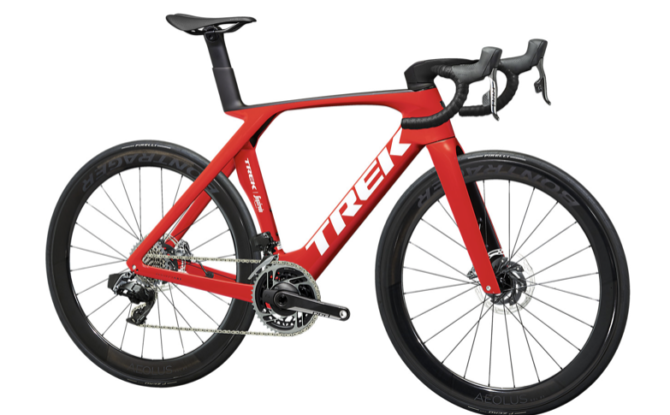
Trek’s director of road bikes explains the tech behind the new Madone
From BikeRadar.com
It’s been said many times that performance aero race bikes now all look the same – deep tube sections, dropped seatstays and one-piece integrated cockpits typify the modern aero road bike.
That changed with the launch of the new seventh-generation Trek Madone though; its radical seat tube design, with the saddle cantilevered over the rear of the bike and its cut-out at the top of the seat tube, helps to set it apart from other options on the market.
“It needs to be a bike you can just look at and say ‘wow’ and that’s differentiated from everybody else. Our industrial design language helps the bike’s performance as well,” says Jordan Roessingh, director of road bikes at Trek.
Trek says the new Madone is also very efficient, losing 300 grams of weight from the previous model and gaining 20 watts of aerodynamic advantage. This adds up to a saving of around a minute for every hour of riding over a range of speeds, according to the brand.
We talked to Roessingh about the development of the new Madone and its benefits.
Reduced weight
Development of the latest seventh-generation Madone started almost three years ago, as soon as the previous generation was launched.
“We already knew a lot of areas of improvement that we could apply to the next version,” says Roessingh.
Trek’s main focus was on reducing the weight of the new Madone.
“Any time we’re talking about a race bike, speed, aerodynamics and weight become the primary factors that we focus on. The previous version of the Madone was a really fast bike, it was a great-riding bike, it was not a light bike,” Roessingh continues.
